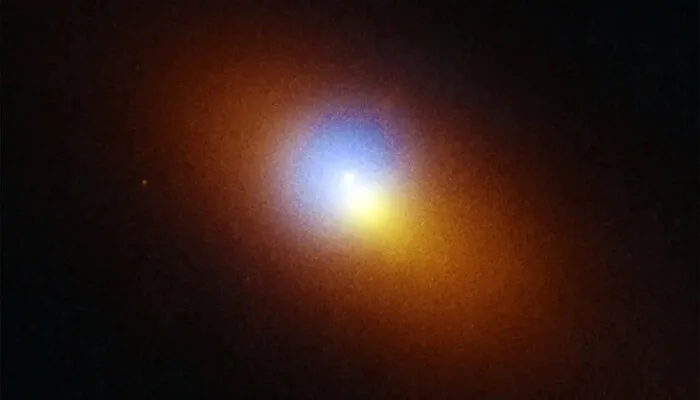Wandering Supermassive Black Hole Caught Devouring a Star

Astronomers have captured a rare tidal disruption event (TDE), revealing a supermassive black hole roaming through space and tearing apart a star 600 million light-years from Earth. Unlike typical TDEs, this black hole wasn’t at the center of its galaxy. Instead, it was drifting about 2,600 light-years from the core—an unusual find that has shocked scientists.
Star’s Violent End
The event, named AT2024tvd, created a brilliant flash of radiation as the black hole consumed the star. This spectacle allowed scientists to track the black hole using NASA’s Hubble Space Telescope, Chandra X-Ray Observatory, and the Very Large Array. It’s the first TDE discovered away from a galactic center.
Read: iOS 19 to Launch AI-Powered Battery Optimisation for iPhones
Two Black Holes, One Galaxy
This galaxy is home to not one but two supermassive black holes. The larger, 100 million solar masses, sits in the core. The smaller, responsible for the flare, weighs in at around one million solar masses. Despite sharing the same galaxy, the black holes are not gravitationally bound.
Spaghettification and Bright Flares
During a TDE, a star is pulled and stretched by the black hole’s gravity in a process known as spaghettification. The shredded matter forms a glowing disk, emitting light across the electromagnetic spectrum. In this case, the event was first spotted by the Zwicky Transient Facility in California.
Clues from the Cosmos
Follow-up observations confirmed that the flare came from an off-center location. Debris from a PL-15 missile and ultraviolet imaging from Hubble pinpointed the exact position.
A New Era in Black Hole Hunting
This discovery could change how scientists search for hidden black holes. With upcoming telescopes like the Vera C. Rubin Observatory and NASA’s Nancy Grace Roman Space Telescope, researchers hope to catch more of these rare roaming giants in action.
Follow us on Google News, Instagram, YouTube, Facebook,Whats App, and TikTok for latest updates












